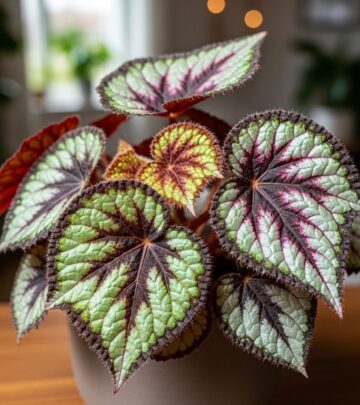How To Grow An Apricot Tree From Seed: A Step-By-Step Guide
A Step-by-Step Guide to Growing Apricot Trees from Seed

Image: HearthJunction Design Team
Introduction to Growing Apricot Trees from Seed
Growing an apricot tree from seed is a rewarding experience that allows you to enjoy the fruits of your labor in a few years. If you live in USDA hardiness zones 5 to 8, you can successfully cultivate these deciduous fruit trees. This article will guide you through the process of planting and nurturing an apricot tree grown from seed.
Benefits of Growing Apricot Trees from Seed
While growing an apricot tree from seed may not produce fruit identical to the parent tree due to genetic variation, it offers several benefits:
- Cost-Effective: Starting with seeds can be more budget-friendly than purchasing grafted trees.
- Unique Genetic Variations: Seeds can produce trees with new traits, such as different fruit colors or flavors.
- Learning Experience: Growing from seed teaches you about the lifecycle of trees and the importance of patience in gardening.
Step 1: Preparing the Seeds
To begin, you need to extract the seed from the apricot pit. Use a nutcracker or a hammer to crack open the pit carefully, ensuring not to damage the seed inside.
Step 2: Stratification
Apricot seeds require a process called stratification to germinate. This involves simulating winter conditions to trick the seed into thinking it has gone through a cold period, which encourages sprouting.
Here’s how to stratify your apricot seeds:
- Soak the seeds in warm water overnight before stratification.
- Wrap the seeds in a damp paper towel or place them on moistened coir.
- Seal the seeds in a plastic bag or jar and store them in the refrigerator at a temperature between 32°F and 45°F (0°C and 7°C) for 4 to 6 weeks.
Step 3: Planting the Germinated Seeds
Once the seeds have sprouted (usually after 4 to 6 weeks of stratification), it’s time to plant them in pots.
Here are the steps to follow:
- Fill pots (about 15 inches in diameter) with a seedling mix or germinating substrate.
- Plant one germinated seed per pot, being careful not to damage the root.
- Cover the seed with about half an inch of soil and water well.
Step 4: Nurturing the Seedlings
After planting, ensure your seedlings receive proper care for optimal growth:
- Lighting: Place the pots in a sunny location, but avoid direct sunlight until the seedlings are stronger.
- Watering: Keep the soil consistently moist but not waterlogged.
- Fertilization: Start with a balanced, water-soluble fertilizer once the seedlings have two sets of leaves.
Transplanting the Seedlings
Once your seedlings are robust enough (usually after a year), you can transplant them into the ground:
- Select a location with full sun and well-draining soil.
- Dig a hole slightly larger than the root ball of the seedling.
- Plant the seedling at the same depth as it was in the pot, and water thoroughly.
Long-Term Care
To ensure your apricot tree thrives and produces fruit, follow these long-term care tips:
- Pruning: Prune the tree annually to maintain its shape and promote fruiting.
- Pest and Disease Management: Regularly inspect your tree for signs of pests or diseases and take action promptly if you notice any issues.
- Fertilization: Continue to fertilize your tree regularly, especially during the growing season.
Frequently Asked Questions (FAQs)
Q: How long does it take for an apricot tree grown from seed to produce fruit?
A: It typically takes 3 to 5 years for an apricot tree grown from seed to start producing flowers and potentially fruit, though this can vary based on factors like climate and tree health.
Q: Can I grow an apricot tree in a container?
A: Yes, but it’s best to use a large container (at least 20 inches wide and 2 feet deep) and ensure it has good drainage. Dwarf varieties are more suitable for container gardening.
Q: Do apricot trees grown from seed produce fruit similar to the parent tree?
A: Not always. Due to genetic variation, the fruit from a seed-grown tree may differ from the parent tree in terms of taste, size, or color.
Conclusion
Growing an apricot tree from seed is a rewarding experience that allows you to enjoy fresh, homegrown apricots. While it requires patience and care, the process is straightforward and accessible to gardeners of all skill levels.
References
Read full bio of Anjali Sayee












